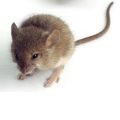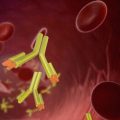PTE考生目前最大的问题之一就是练习题缺乏。除了有限的基本官方书(PLUS,Testbuilder, OG)之外
就没有题了。很多英语基础不是很扎实的同学很难找到练习材料。悉尼文波雅思PTE培训学校专门为澳洲,尤其是悉尼、墨尔本的PTE考生准备了适合PTE听力阅读练习的科学60秒。各位PTE同学可以练习PTE听力中的summarise spoken text和PTE口语中的retell lecture,PTE听力口语-科学60秒-Frosty Moss练习记笔记技巧和复述。废话少说,下面开始:
听力内容:
60秒科学节目(SSS)是科学美国人网站的一套广播栏目,英文名称:Scientific American – 60 Second Science,节目内容以科学报道为主,节目仅一分钟的时间,主要对当今的科学技术新发展作以简明、通俗的介绍,对于科学的发展如何影响人们的生活环境、健康状况及科学技术,提供了大量简明易懂的阐释。
This is Scientific American — 60-Second Science. I’m Jason Goldman.
Got a minute?
River otters, like other social animals, have to carefully weigh the costs and benefits of hanging out in large groups. A big group makes it easier to catch fish, which seems like a good deal, but there’s a downside to social life too. More otters means more chances for disease transmission, for example, or for aggressive conflict. So they balance these pressures by living in what researchers call a “fission-fusion society.”
“There’s this constant dynamic of splitting and joining into larger groups.”
University of Wyoming ecologist Adi Barocas. To understand the factors that drive these social dynamics, Barocas’s team, from the University of Wyoming and the Alaska Department of Fish & Game, has spent decades spying on the coastal river otters of Alaska near Prince William Sound. To do it, they use motion-activated camera traps as well as implanted radio trackers.
“The latrines, which are pretty much communal toilets that the river otters use, they seem to have an important function in the life of river otters.”
That’s right: river otter society is organized around the bathroom. It makes good sense. By investigating a latrine, an otter can sniff out just how many otters there are in the area, and who they might be.
The researchers found that the otters performed more signaling behaviors like sniffing, body rubbing, or urinating, than social behaviors, like grooming or play, at what they called crossover latrines, which were located at the junctions of water bodies.
Thanks to all that communicative signaling, these crossover latrines were also more likely to host fusion events, resulting in large aggregations of up to eighteen otters. In other words, the otters see latrines as a place to exchange information, a sort of central marketplace.
Because the location of crossover latrines was determined by the physical landscape, this suggests that the complexity of the physical environment plays an important role in determining their social behavior.
Next, the researchers want to see just how and what the otters communicate at latrines.
“We often see the river otters sniffing at the latrines and also defecating, and before defecating they do a little ritualized behavior that we termed ‘the poop dance.'”
What scents are they trying to sniff out? Which olfactory compounds are at play? Can the otters control the scents they leave behind? Who’s watching the poop dance?
And most importantly, why doesn’t anybody ever remember to flush?
Thanks for the minute for Scientific American — 60-Second Science Science. I’m Jason Goldman.
墨尔本悉尼文波PTE原创首发
更多精彩请持续关注微信wenbo_tv2。





